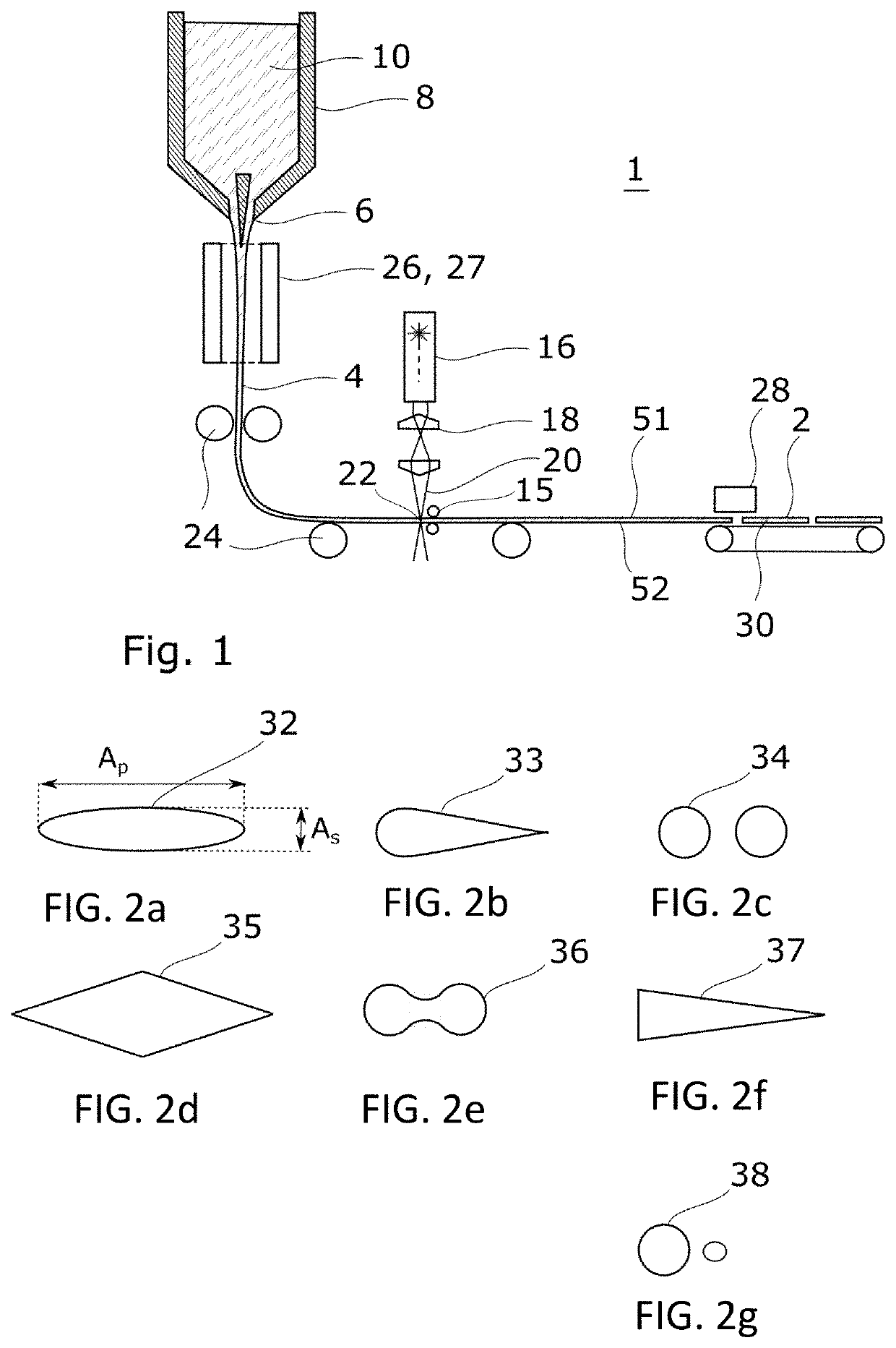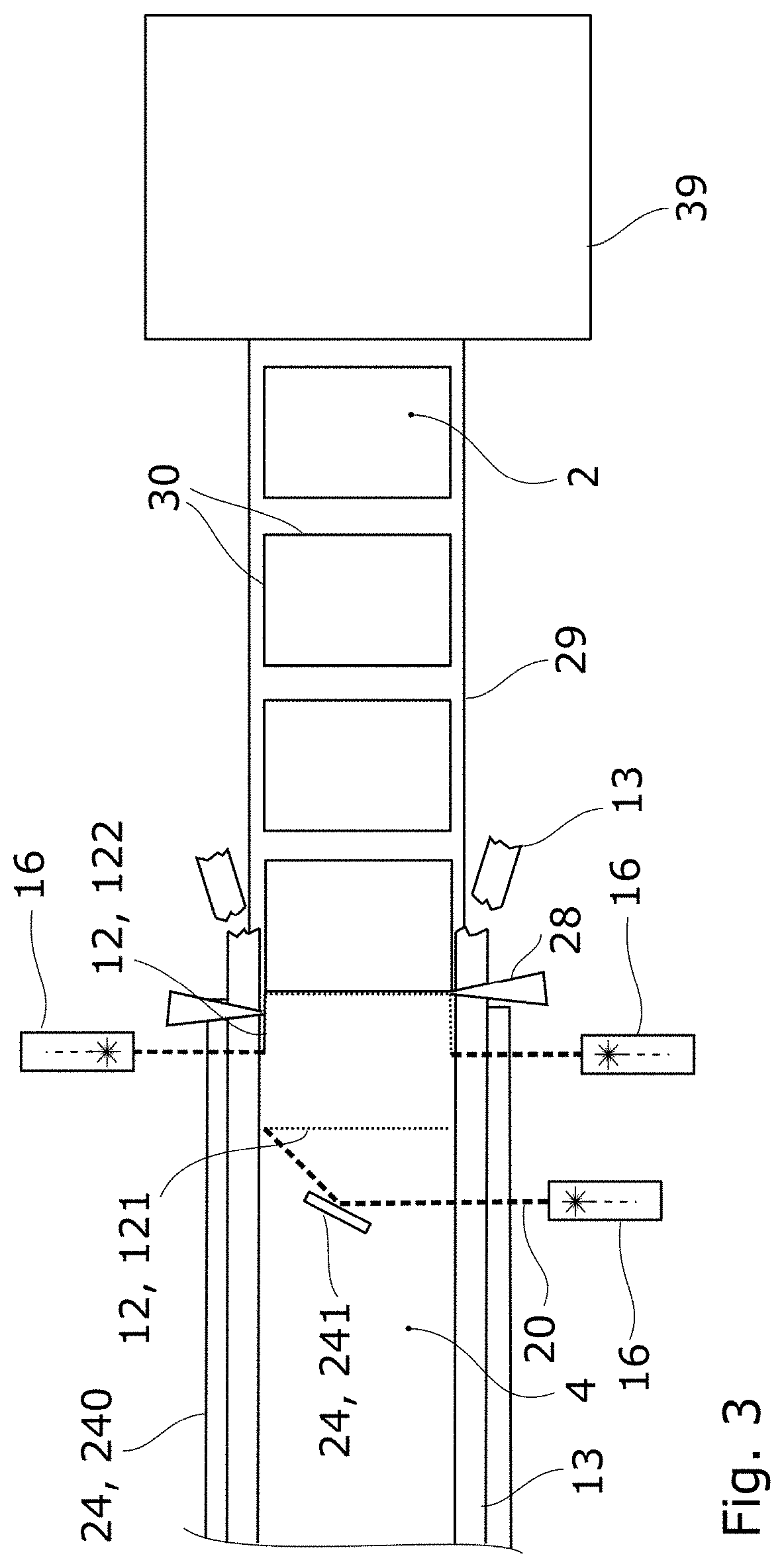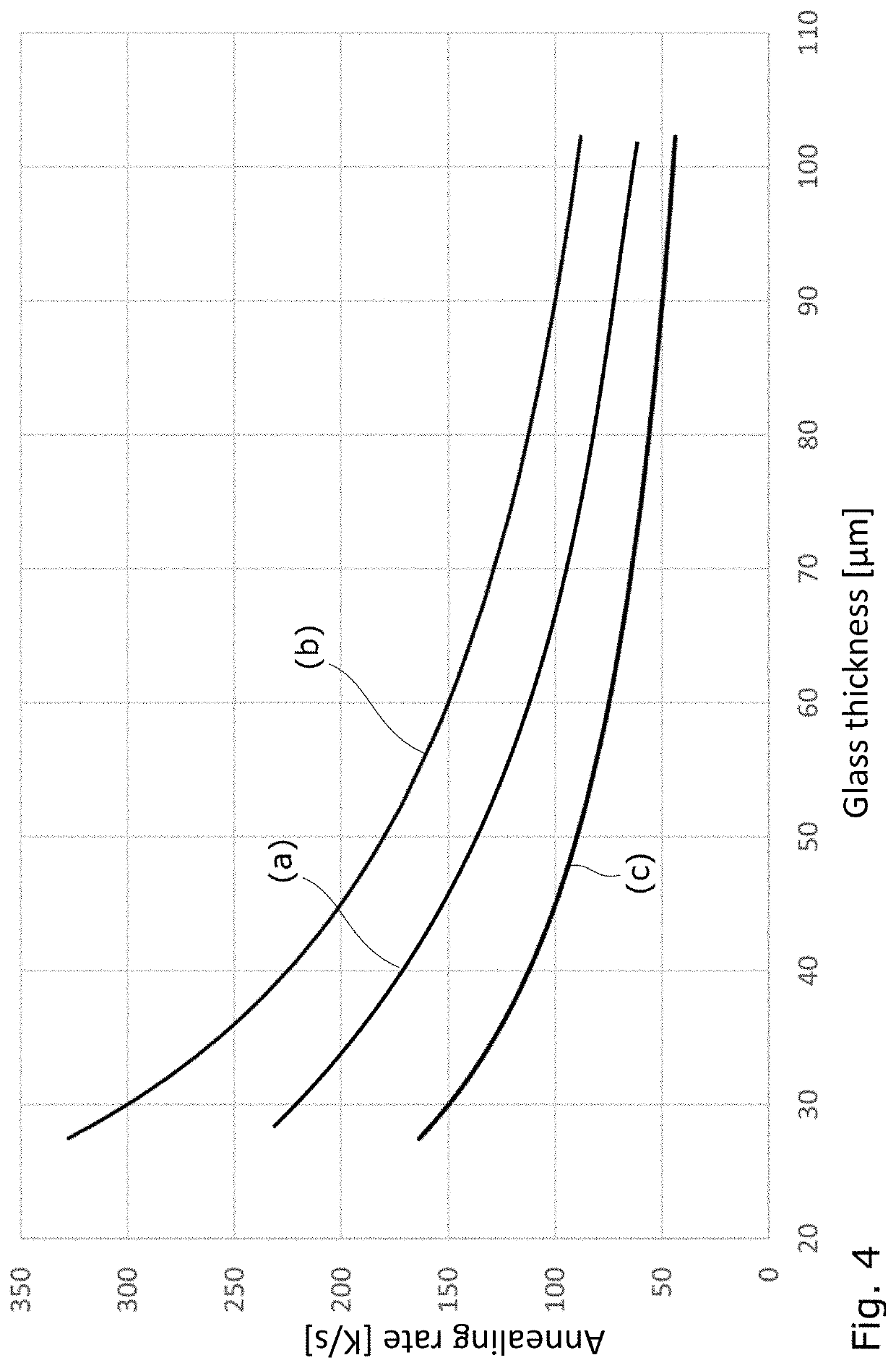Method for producing glass sheets and glass sheets produced by such method and use thereof
- Summary
- Abstract
- Description
- Claims
- Application Information
AI Technical Summary
Benefits of technology
Problems solved by technology
Method used
Image
Examples
Embodiment Construction
[0049]FIG. 1 shows an exemplary embodiment of an apparatus 1 for producing glass sheets 2 that have a predefined glass thickness d in a range from 15 μm to 2 mm. A continuous glass ribbon 4 is drawn from a molten glass 10 through a downwardly directed slot-shaped nozzle 6 which forms part of hot forming means 8. Preferably, the so-called down-drawing process is employed as the hot-forming process for glass ribbons here, and the introducing of predetermined breaking lines 12 defined by filamentary defects 14, i.e. laser filamentation, is preferably accomplished directly during the down-drawing process, most preferably after the glass ribbon 4 has been deflected to the horizontal.
[0050]At least one ultra-short pulsed laser 16 is used to introduce controlled predetermined breaking lines 12 into the glass ribbon 4, which are defined by filamentary defects 14. With beam-shaping optics 18, the laser pulse forms an approximate Bessel beam 20 which produces a focus area 22 that intersects t...
PUM
| Property | Measurement | Unit |
|---|---|---|
| Length | aaaaa | aaaaa |
| Length | aaaaa | aaaaa |
| Length | aaaaa | aaaaa |
Abstract
Description
Claims
Application Information
 Login to view more
Login to view more - R&D Engineer
- R&D Manager
- IP Professional
- Industry Leading Data Capabilities
- Powerful AI technology
- Patent DNA Extraction
Browse by: Latest US Patents, China's latest patents, Technical Efficacy Thesaurus, Application Domain, Technology Topic.
© 2024 PatSnap. All rights reserved.Legal|Privacy policy|Modern Slavery Act Transparency Statement|Sitemap



